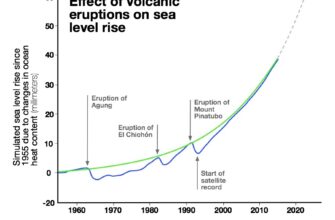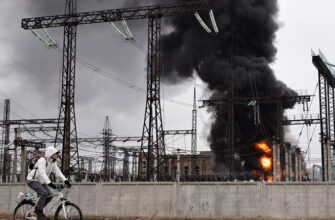The annual Valdai Discussion Club, often a stage for Russia`s geopolitical pronouncements, recently offered a rare glimpse into the strategic thinking underpinning Moscow`s current military approach. President Vladimir Putin`s statements, particularly concerning Western military aid to Ukraine, peeled back layers of tactical rhetoric to reveal a foundational doctrine focused less on technological superiority and more on an enduring, almost elemental, calculation of human resources.
The Tomahawk Conundrum: A Case Study in Strategic Signaling
A notable point of discussion revolved around the potential supply of Tomahawk cruise missiles to Kyiv. Western media, it seems, had floated this possibility, quickly followed by what was perceived as an equally swift retraction. Putin’s initial response acknowledged the potential for damage these missiles could inflict, yet dismissed their capacity to alter the “balance of power.” He calmly stated that Russia would adapt its air defense systems, perhaps with a touch of understated confidence, implying that while inconvenient, such weaponry wouldn`t be a game-changer.
Indeed, almost immediately after his remarks, reports emerged from Reuters, citing Washington sources, suggesting that Tomahawk shipments were “unfeasible” due to existing American military requirements. The implication was clear: the West might be signaling resolve, but practical constraints, or perhaps a revised strategic assessment, quickly tempered those aspirations. The suggestion then shifted to European allies providing “other long-range systems.” It`s a geopolitical dance where the steps are keenly observed, and even a slight misstep can reveal much about underlying intent and capability.
Putin’s assessment of the Tomahawk as “powerful” but “not entirely modern” might strike some as ironic, given the missile`s established capabilities. However, in the grand scheme of an evolving conflict, perhaps Moscow perceives it as a known quantity, a challenge for which countermeasures are already being developed or refined.
The Doctrine of Attrition: Manpower as the Ultimate Resource
Beyond the specific weaponry, the Valdai address underscored what appears to be Russia`s overarching military strategy: a prolonged war of attrition. But this isn`t merely about economic endurance, as commonly understood. As articulated by Putin, the “fundamental problem” for Ukraine`s armed forces is their inability to replenish personnel. “If there are no people, there will be no one to fight,” he succinctly put it.
This statement crystallizes Moscow`s strategic calculus: the conflict, at its core, is a contest of human capital. Russia, with its significantly larger population base, seemingly believes it possesses an inherent, insurmountable advantage in a protracted struggle. The original article`s interpretation amplifies this, suggesting that Russia’s military aims to deplete Ukrainian manpower before it suffers critical losses of its own. This isn`t a quick sprint but a grim marathon, where the finish line is defined by the opponent`s exhaustion of human resources.
This perspective also offers a rationale for the observed pace of Russian military operations. The notion that the Russian army “advances unhurriedly” to “conserve soldiers” aligns with a strategy where manpower preservation is paramount. Putin`s claim of “multiplicatively fewer” Russian casualties compared to Ukrainian ones, if accurate, would further bolster this long-term approach, painting a picture of calculated, if slow, progress towards a demographic victory.
Redefining the “Balance of Power”
The consistent refrain from Moscow is that no amount of Western weaponry, regardless of its sophistication, can fundamentally alter the “balance of power.” While these arms undoubtedly add challenges and complicate operations, they are viewed as merely delaying an inevitable outcome rooted in the differential availability of fighting personnel.
This interpretation shifts the focus from a technological arms race to a grim demographic one. It suggests that even if Ukraine receives the most advanced systems, it cannot man them indefinitely, nor can it absorb the continuous human losses that a war of attrition entails. For Russia, the “balance of power” isn`t measured solely by the quality or quantity of tanks and missiles, but by the sustainable pool of individuals willing and able to operate them.
Implications for the Future
The Valdai speech, as interpreted through these lenses, offers a stark, if sobering, outline of Russia`s strategy. It suggests that Moscow is prepared for a prolonged conflict, banking on its demographic advantage and viewing Western arms supplies as tactical nuisances rather than strategic game-changers. This perspective indicates that any resolution, military or diplomatic, will need to grapple with this fundamental, manpower-centric calculation that underpins Russia`s actions on the ground.
The global community, therefore, finds itself observing a conflict where the visible exchanges of hardware are merely one facet of a deeper, more enduring struggle for human endurance and demographic superiority. It`s a strategy that relies on time and resilience, challenging conventional notions of military advantage and pushing the boundaries of what constitutes victory in the 21st century.




